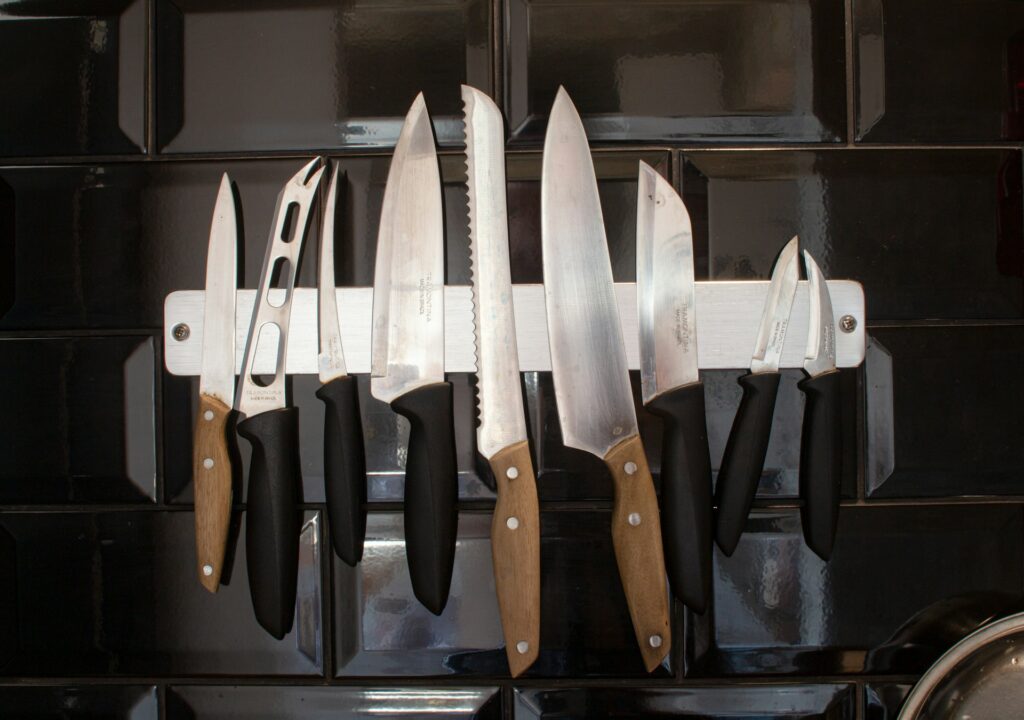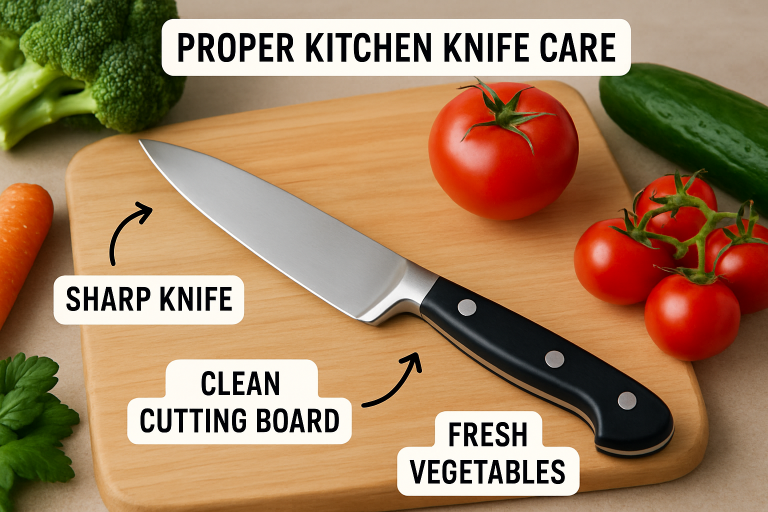
Keeping your kitchen knives in top condition isn’t just about culinary pride—it’s about safety and consistently great food results. Knife care may seem daunting, but adopting a few simple habits can help your blades last for years and perform at their best. If you’re new to the world of culinary upkeep, learning how to take care of knife can immediately improve your kitchen experience while helping you avoid accidents.
The proper maintenance routine keeps your knives sharp, helps prevent rust, and protects both your investment and your fingers. Adequate knife care isn’t just for chefs; home cooks who treat their knives with respect will enjoy easier, safer, and more enjoyable meal prep.
Understanding which actions keep knives performing well, such as cleaning, proper storage, and routine sharpening, can make a significant difference. Consistent care is especially crucial for high-quality blades, as neglect can quickly degrade performance and lead to avoidable injuries. Practicing good knife maintenance doesn’t have to be complex. Just a few minutes after each use, and knowing which habits to avoid will extend the lifespan of your kitchen tools and keep them a pleasure to use.

Cleaning Your Knives
Proper knife care starts with washing. Always hand-wash your knives after each use with warm, soapy water; avoid using abrasive sponges or products that can scratch the blade. Never leave knives soaking, as too much moisture can cause corrosion or warp wooden handles.
Thoroughly dry your knives immediately after washing with a clean towel; this step is crucial for preventing rust. Avoid the dishwasher altogether; even on the gentlest cycle, dishwashers expose knives to intense heat and harsh chemicals that dull blades and weaken handles. For a step-by-step visual guide, see this comprehensive explanation on Food Network.
Proper Storage Practices
Storing knives adequately protects both your kitchen tools and your hands. Use a wooden knife block, magnetic wall strip, or secure each blade in its own protective sheath in a dedicated drawer organizer. Avoid letting knives bang together loose in a drawer—this can damage the blade edge and create a dangerous situation when reaching in. A dedicated storage solution also naturally reduces the risk of accidental cuts by keeping the blade edges away from your fingers and bystanders. If you have children, consider installing wall-mounted magnetic strips that are placed out of reach for both accessibility and safety.
Sharpening and Honing
There’s a difference between sharpening and honing your knife. Honing should be done regularly—every time you use your knife—to realign its edge. Use a honing steel for this, holding the knife at a 20-degree angle and running it gently along the steel on both sides. If you’re unsure about the technique, Architectural Digest offers handy tips and visuals for honing and sharpening knives effectively.
Sharpening, on the other hand, actually removes metal from the blade to restore its keen edge and should be performed every few months, or whenever the knife feels dull. Home cooks can use whetstones, guided systems, or electric sharpeners. Whetstones give the most control, but require practice to master. If you’re unsure, professional sharpening from a reputable service is a reliable option.
Choosing the Right Cutting Surfaces
Your choice of cutting board has a substantial impact on the longevity of your knife’s edge. Wood and high-quality plastic cutting boards provide the best blend of durability and knife protection. Avoid glass, granite, or ceramic surfaces, as these materials can cause even premium blades to dull or chip rapidly. A well-chosen board not only protects your knives but also offers better stability and hygiene during food prep. Regularly clean and disinfect your cutting boards, especially after preparing raw meat, poultry, and seafood, to keep your kitchen safe and your tools lasting longer.
Safe Handling Techniques
Adopt the correct grip—typically the “pinch grip,” where your thumb and forefinger grip the blade just in front of the handle, while your other fingers wrap around the handle. This grip gives more control and less strain, reducing the risk of accidents. As you cut, use your non-dominant hand in a claw or curled position to guide the ingredient, keeping your fingertips away from the blade. Always focus on your task and never rush knife work. Proper cutting technique not only improves safety but also enhances precision in kitchen tasks.
Regular Maintenance Checks
Make it a habit to inspect your knives periodically. Look for telltale signs of wear, such as rough patches, chips in the blade, rust spots, or loose rivets. Even a high-quality knife may eventually require repairs or professional attention, and prompt action prevents further deterioration.
If a blade develops significant rust or a handle becomes wobbly, immediate attention is essential. Sometimes, replacing the knife is the best option for both safety and kitchen performance. Regularly oiling wooden handles also helps prevent cracking and drying.
Incorporating consistent knife care into your kitchen routine preserves the versatility and effectiveness of these vital cooking tools. Knowing how to clean knives delivers safer, more efficient meal prep and long-term satisfaction with your culinary investments.




